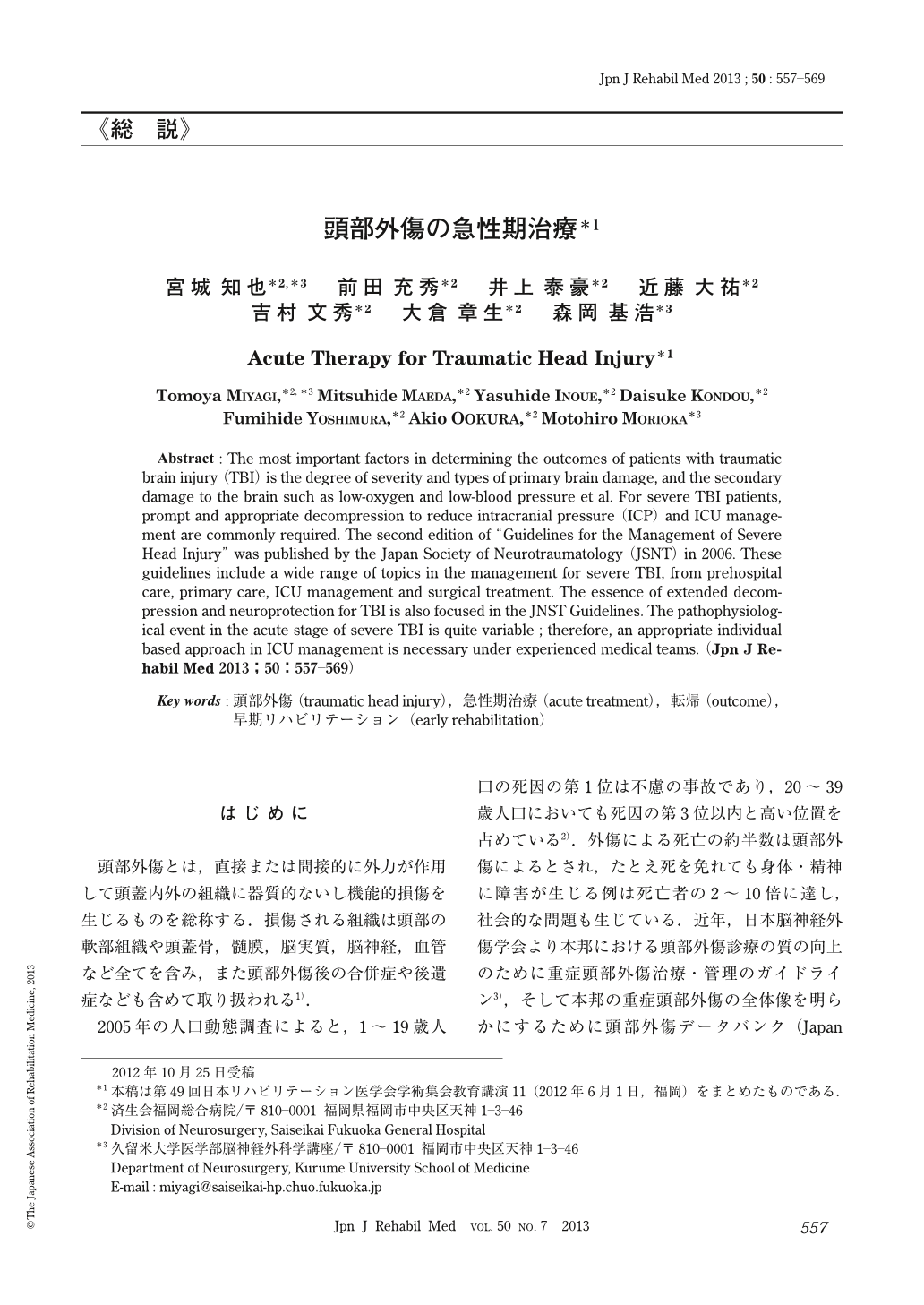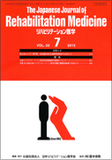Japanese
English
- 販売していません
- Abstract 文献概要
- 1ページ目 Look Inside
- 参考文献 Reference
はじめに
頭部外傷とは,直接または間接的に外力が作用して頭蓋内外の組織に器質的ないし機能的損傷を生じるものを総称する.損傷される組織は頭部の軟部組織や頭蓋骨,髄膜,脳実質,脳神経,血管など全てを含み,また頭部外傷後の合併症や後遺症なども含めて取り扱われる1).
2005年の人口動態調査によると,1~19歳人口の死因の第1位は不慮の事故であり,20~39歳人口においても死因の第3位以内と高い位置を占めている2).外傷による死亡の約半数は頭部外傷によるとされ,たとえ死を免れても身体・精神に障害が生じる例は死亡者の2~10倍に達し,社会的な問題も生じている.近年,日本脳神経外傷学会より本邦における頭部外傷診療の質の向上のために重症頭部外傷治療・管理のガイドライン3),そして本邦の重症頭部外傷の全体像を明らかにするために頭部外傷データバンク(Japan Neurotrauma Data Bank:JNTDB)4)が発表された.そこで,本稿ではこれらガイドラインやデータバンクの内容を踏まえて,頭部外傷の特徴や急性期治療について解説する.
Abstract : The most important factors in determining the outcomes of patients with traumatic brain injury (TBI) is the degree of severity and types of primary brain damage, and the secondary damage to the brain such as low-oxygen and low-blood pressure et al. For severe TBI patients, prompt and appropriate decompression to reduce intracranial pressure (ICP) and ICU management are commonly required. The second edition of “Guidelines for the Management of Severe Head Injury” was published by the Japan Society of Neurotraumatology (JSNT) in 2006. These guidelines include a wide range of topics in the management for severe TBI, from prehospital care, primary care, ICU management and surgical treatment. The essence of extended decompression and neuroprotection for TBI is also focused in the JNST Guidelines. The pathophysiological event in the acute stage of severe TBI is quite variable ; therefore, an appropriate individual based approach in ICU management is necessary under experienced medical teams.

Copyright © 2013, The Japanese Association of Rehabilitation Medicine. All rights reserved.


